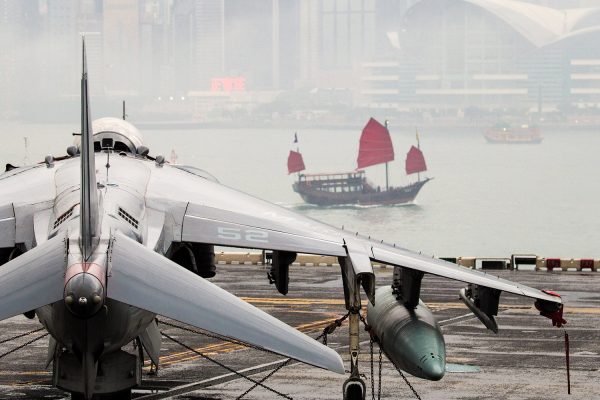
China’s revisionist maritime claims and aggressive policy toward its neighbors in Southeast Asia suggest the country’s “peaceful rise” has come to an end. If that is the case, America’s strategists would be wise to advice increased engagement — to reassure allies in the Pacific and prevent China from challenging its supremacy there.
However, China’s policy may not be a calculated one. If America “responds” with a show of military force, it could inadvertently exacerbate China’s sense of encirclement and encourage the sort of aggression it believes China started.
In recent months, China has moved a deepwater drilling rig into waters that are disputed by Vietnam, rammed Vietnamese fishing boats in the South China Sea and deployed three nuclear missile submarines to the same area, engaged in a standoff with the Philippine navy over the Scarborough Shoal and declared an Air Defense Identification Zone over Japan’s Senkaku Islands — which America immediately challenged by flying two bombers through it unannounced.
It is hard not to see a more belligerent China in these moves but Robert E. Kelly, who is an associate professor of international relations at Pusan National University in South Korea, cautions at The Interpreter, the Australian Lowy Institute for International Policy’s blog, not to “attribute to conspiracy that which can be just as easily explained by incompetence.” What looks like a larger plan to push the United States out of East Asia may be far less organized and coherent, he writes — “the outcome of a series of domestic factional battles in a new administration rushing to establish itself, control its military and legitimate itself to a cynical population.”
One explanation for recent Chinese behavior may lie in the leadership change that was finalized in March last year when Xi Jinping became president. Kelly believes he almost certainly made promises to the army as part of a factional power struggle within the ruling Communist Party — which “is arguably the most hawkish, anti-American faction in the government.”
Xi’s governing philosophy taps into a resurgent Chinese nationalism as the mere promise to deliver growth that was made by his predecessors no longer placates either the army or the population at large.
The Communist Party made a basic compact with the Chinese people: It would deliver growth while the people gave it a monopoly on power.
That compact has largely held up but could start to fray once growth inevitably slows down. What Kelly calls “naval nationalism” could be designed to maintain popular support once it does — and simultaneously keep the generals happy.
For now, the Communists have delivered prosperity and pulled China back to the global esteem it believed it enjoyed before the “century of humiliation” that began with the First Opium War in 1839 and only ended when they took over in 1949.
Ironically, the Communist Party “has succeeded to the point where it is longer necessary,” writes Kelly.
Specifically, China is at the point where single-party rule for developmental purposes can no longer be really justified. China is not really a poor country anymore. The “Asian developmentalist” argument that democracy obstructs growth no longer holds. China is either now, or will shortly, be ready for democracy: its citizens are educated and wealthy enough that paternalist arguments for party guidance no longer make sense (if they ever did).
This provides another possible reason for China’s behavior toward its neighbors. “Better tension than transition,” as Kelly puts it. The Communist Party’s priority is staying in power, even if it comes at the expense of scaring its neighbors and risking a standoff with the United States.
